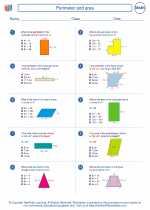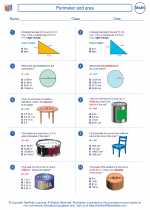Perimeter and area -> perpendicular
Perpendicular Lines
Perpendicular lines are two lines that intersect at a 90-degree angle. In other words, if you were to place a protractor at the point of intersection, the angle formed would measure 90 degrees.
Properties of Perpendicular Lines:
- Perpendicular lines have slopes that are negative reciprocals of each other. If the slope of one line is m, then the slope of the perpendicular line is -1/m.
- The product of the slopes of two perpendicular lines is -1.
- Perpendicular lines form right angles at their point of intersection.
Examples:
Consider the following examples:
Example 1:
Line 1: y = 2x + 3
Line 2: y = -1/2x + 5
To determine if the two lines are perpendicular, we can compare their slopes. Line 1 has a slope of 2, and Line 2 has a slope of -1/2. We can see that these slopes are negative reciprocals of each other, so the lines are perpendicular.
Example 2:
Line 3: 3x - 4y = 8
Line 4: 4x + 3y = 6
To determine if the two lines are perpendicular, we can solve for the slopes of each line. Line 3 can be rewritten as y = (3/4)x - 2, and Line 4 can be rewritten as y = (-4/3)x + 2. Again, we can see that the slopes are negative reciprocals of each other, so the lines are perpendicular.
Study Guide:
Key points to remember when studying perpendicular lines:
- Understand the concept of perpendicular lines and how to identify them based on their slopes.
- Be able to find the slope of a line given its equation, and understand how to determine if two lines are perpendicular based on their slopes.
- Practice solving problems involving perpendicular lines to solidify your understanding of the concept.
- Understand the geometric interpretation of perpendicular lines, and how they form right angles at their point of intersection.
Remember to practice identifying perpendicular lines and working with their slopes to become comfortable with the concept.
.◂Math Worksheets and Study Guides Eighth Grade. Perimeter and area

 Worksheet/Answer key
Worksheet/Answer key
 Worksheet/Answer key
Worksheet/Answer key
 Worksheet/Answer key
Worksheet/Answer key
 Worksheet/Answer key
Worksheet/Answer key
